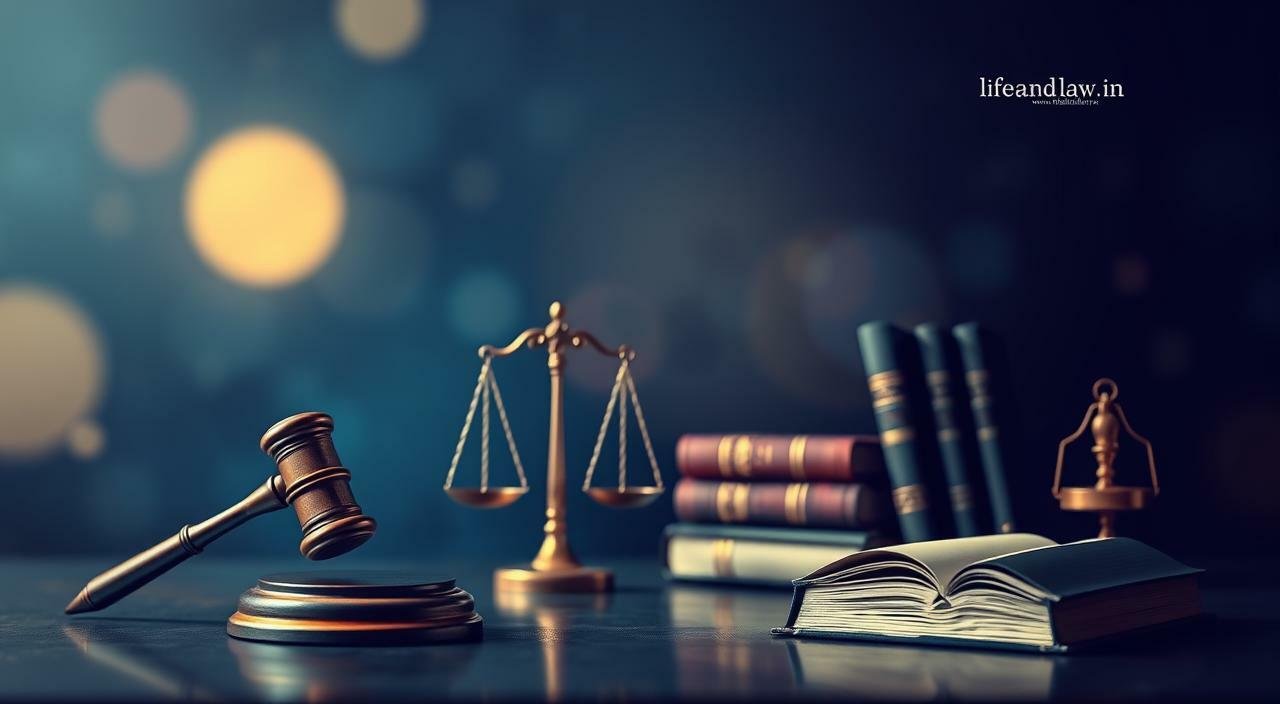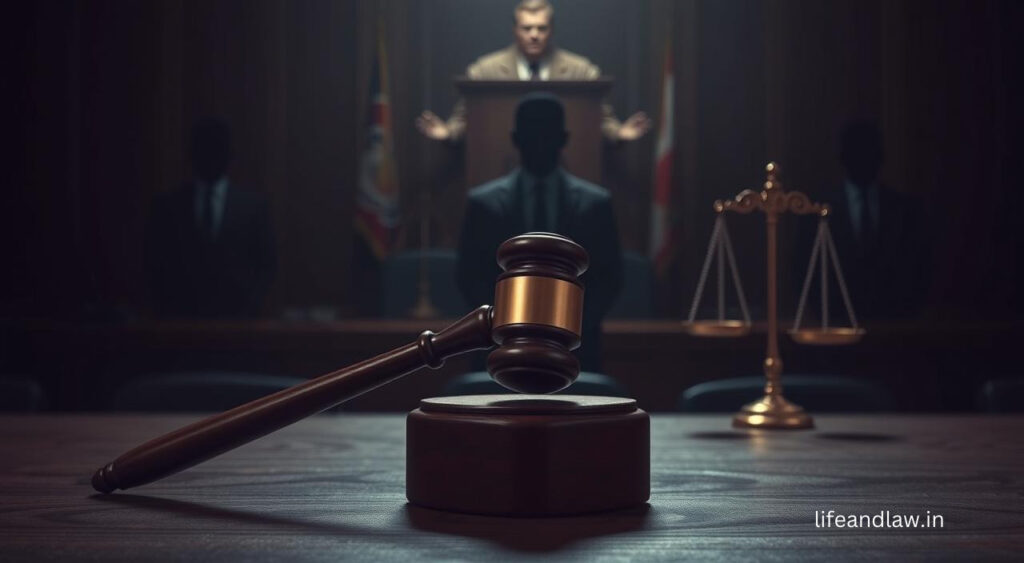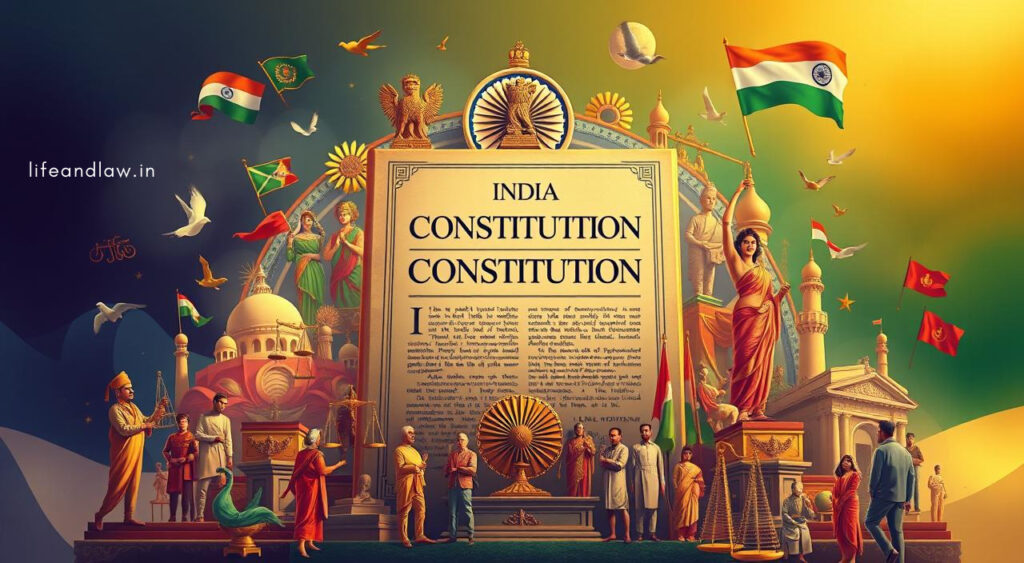Trending

Laws determine our daily life in countless ways: safeguarding personal freedoms and even maintaining social order.Laws are a significant part of our lives every day, from protecting our personal freedoms to maintaining order in society. And yet, most of us only think about law when facing legal challenges. This creates a gap in understanding for most people, unaware of how deeply laws influence their rights, responsibilities, and interaction with others.
The law is not a monolith but an enormous, complicated system, divided into specific branches which serve unique purposes. Ranging from maintaining public safety through criminal law to facilitating commercial transactions through corporate law, every legal discipline finds application in society. Laws dictate everything, from family squabbles and environmental conservation to international politics and intellectual property, thus touching almost every aspect of our lives.This blog will explain the legal landscape by offering a beginner-friendly guide to the major types of law. Whether you’re curious about your rights at work, how contracts are enforced, or the legal frameworks shaping global issues like climate change, understanding the basics is important.
The essence of laws is to enforce the rights that promote order, protect rights, and ensure justice in society. On the basis of scope, origin, and function, laws may be classified, which, in turn, clarifies the role legal systems play. Laws can be classified as :
Public Law – deals with the relationship between individual and state to protect public interests, to control government actions, and maintain order.
Examples: Criminal Law, Constitutional Law, Administrartive Law
Private Law – deals with relations between private individuals or entities to resolve disputes, protect individual rights, and ensure fair dealings between parties.
Examples: Contract Law, Family Law , Property Law
Substantive Law – outlines specific rights and obligations of persons and bodies of people. It determines what is legal or illegal.
Examples – Anti-discrimination in the workplace laws, Laws that stipulate the punishment in case of fraud or embezzlement.
Procedural Law – prescribes the procedures of enforcing substantive laws. It ensures fairness and consistency in applying substantive laws.
Examples: Court procedures, including the time limits within which to file a lawsuit , Rules of evidence determining what can be presented during a trial.

Statutory Law – consists of laws enacted by legislatures and codified into statutes. It gives room for clarity through a series of written laws which shall govern accountability in government actions.
Examples: Statutes which mandate an individual to pay some form of income taxes , The environmental regulation in regards to industrial pollution.
Common Law: develops through precedents of various judicial decisions. It fills gaps in statutory law and adapts to changing societal needs.
Examples:Tort law cases, like liability for negligence in personal injury lawsuits , Property disputes resolved by referring to earlier court rulings.
National Law – applies to a country, governing its citizens and institutions to maintaion order and justice within a nation.
Examples : Criminal laws that deal with theft or assault , Family laws that determine marriage or custody issues.
International Law – governs relationships between nations and global entities. It promotes cooperation and resolves disputes on a global scale.
Examples: Treaties like the Paris Agreement on climate change , Laws of war under the Geneva Conventions.
Local Law– is enacted by municipalities to address specific community needs.
Example: Zoning laws regulating land use within a city.
State Law – governs matters like education and marriage within a state’s jurisdiction.
Example: Laws requiring public school attendance.
Federal Law – applies across the nation, where issues that affect all states are decided.
Examples: Federal laws concerning immigration or interstate commerce.

Criminal law deals with offenses against society, which upholds rules that maintain public safety, order, and morality. It defines conduct harmful to individuals or the community and prescribes punishments for violations. Unlike civil law, which resolves disputes between parties, criminal law involves the state prosecuting individuals accused of crimes. Crimes are classified between felonies, which include criminal offenses such as murder, robbery, and other comparable offenses. Misdemeanours include minor offenses like small theft, vandalism, among others. Criminal Law deters criminals from engaging in any criminal activities, puts culprits behind the bar, rehabilitates an offender, and ensures proper safety of society.
Key legislations:
Civil law has to do with disputes that arise between individuals, organizations or entities, focusing on resolving a conflict and protecting rights more than punishing crimes. In fact, it is a comprehensive legal category that deals with private relationships and responsibilities. Unlike criminal law, which tries to deal with offenses to the state, civil law searches for remedies, which typically take the form of compensation in money or specific performance for example Contract Law, Property Law , Family Law , Tort Law, Employment Law etc. Civil law provides a restitution and fair answer to what is believed as a deprivation of rights from one’s part. The civil standard, often a “preponderance of evidence,” proves easier to get a result compared to a criminal proceeding. Civil law is central to harmony: personal as well as commercial relationships within the framework of a clarified legal order.
Code of Civil Procedure, 1908.
Indian Contract Act, 1872.
Transfer of Property Act, 1882.
Specific Relief Act, 1963.

Constitutional law provides guidelines regarding the structuring, powers, and functions of governments, protecting the rights of the individuals within it through constitutional frameworks. This law enforces laws and policies to meet a country’s constitution as its supreme legal document..Constitutional law preserves democracy by making governments answerable, protecting citizen’s rights, and the rule of law in a country.
Administrative law comes into play whenever agencies create policies, give out licenses, enforce regulations, or handle disputes. It makes sure that decisions are made legally and that citizens have a means to protest if actions made by the agency are considered unreasonable or beyond the powers of an agency (ultra vires). For Example, A firm applies for environmental permission to build a plant. EPA denies the authorization on the grounds that it would disrupt the existing ecosystems. In administrative law, under administrative courts, the firm can plead its case against the decision, arguing that the administrative agency did not act fairly and was acting beyond its legal mandates. This is a matter of law: Whether the EPA procedurally adhered to the correct mandates and within its legal powers.It includes Administrative tribunals and regulatory bodies such as SEBI, National Green Tribunal etc.
The IP law will protect creations of the mind, thus enhancing innovations, which leads to economic development. It comprises copyrights, patents, trademarks, industrial designs, and geographical indications. For instance, patents protect inventions, such as pharmaceutical innovation, while trademarks protect the brand identity, such as the TATA logo.India follows the international standards of IP laws provided under its own agreements like TRIPS. The legal enforcement mechanism would indeed be effective, including the remedies provided under the judicial body and IP tribunals.
Key Legislations:

Real estate and property law addresses the ownership, transfer, and regulation of immovable properties such as land and buildings. They aim to make property rights clear, resolve disputes, and observe fairness during transactions. Important features include property registration, stamp duty, acquisition of land, and tenancy laws.
Key Legislations:
Healthcare law controls the medical profession in respect to public health, patients’ rights, and proper ethical standards of medical profession.This includes laws concerning hospital management, medical professionals, drugs safety, and public health activities.
Key Legislations:
Taxation law is the body of law under which taxes are collected. The tax is very important for revenue collection and economic development. There are two sections of tax: direct, which include income tax levied on persons and businesses, and indirect taxes, which embrace GST charged on goods and services.
Key Legislations:

Family laws are constituent elements of personal laws dealing with marriage, divorce, inheritance, and guardianship that reflect India’s myriad cultures and religions. Under various religious laws, several communities have their respective sets of laws.
Key Legislations:
The immigration law controls entry, stay, and departure of foreign nationals in India with respect to national security and regulating population influx. It manages visas, residence permits, citizens, and refugees.
Key Legislations:

Indian corporate and business law oversees the formation, functioning, and regulation of companies. This is done so as to ensure compliance along with growth. Corporate and business laws thus form the backbone of India’s economic framework concerning the formation, functioning, and dissolution of businesses. These laws avoid shrouds in business operations by demanding transparency, accountability, and equality but in relation to promoting economic growth and stakeholder interest.
Key legislations:
The protection of digital infrastructure, data privacy, and online activities in India are governed by cybersecurity and technology law. It looks to safeguard the individual, business, and government against cybercrimes such as hacking, data breaches, and fraud.
Key Legislations:
Human rights law in India aims at the protection of individuals’ fundamental rights and liberties with the aid of equality, dignity, and justice. It is founded upon India’s Constitution, with strong support from Part III guaranteeing fundamental rights that, among other things, embrace the right to life, right to freedom of speech and expression, and the principle against discrimination. The National Human Rights Commission was established through the Act of 1993 specifically to monitor human rights abuse. India is also a signatory to several international treaties including the Universal Declaration of Human Rights (UDHR) and International Covenant on Civil and Political Rights (ICCPR).
Key Legislations:

It involves the protection of India’s natural resources toward sustainable development and ecological balance. These issues include the control of pollution, conservation of wildlife, forests and biodiversity, and water and air quality management. Basically, this kind of law wants to equate economic growth with the protection of the environment and avoid harming human health. It includes various regulatory mechanisms of reducing environmental degradation, public interest litigation, and policies. Indian courts actively interpret environmental rights, which helps strengthen environmental governance and accountability.
| Key Environmental Laws in India | Focus Area |
|---|---|
| Environment (Protection) Act, 1986 | Comprehensive environmental protection |
| Air (Prevention and Control of Pollution) Act, 1981 | Air pollution control |
| Water (Prevention and Control of Pollution) Act, 1974 | Water pollution control |
| Forest (Conservation) Act, 1980 | Forest conservation |
| Wildlife Protection Act, 1972 | Wildlife conservation |
Entertainment and media law cover the legal aspects of entertainment, which includes film and television, music, digital media, and advertising. Some of the issues that cover intellectual property rights, contract, censorship, broadcasting rules, and defamation. As a matter of fact, the law protects the interest of creators while regulating their content so that it will remain within societal standards and also in conformity with ethical norms. With the advancement of digital-based platforms, entertainment and media law also encompasses challenges such as online content regulation, piracy, and privacy concerns.
Key Legislations:
Indian bankruptcy laws give a legal framework for resolving insolvency and addressing the financial distress of individuals and businesses. The first objective is to provide an environment that allows bankruptcy to be resolved expeditiously either through debt recovery or liquidation so that economic stability can be promoted. The Insolvency and Bankruptcy Code, 2016, is central legislation that gives a harmonized process both for corporate and individual insolvency. It ensures that creditors are paid fairly in return with an opportunity for the businesses to restructure. The laws enhance a quicker and more efficient process compared to previous systems.
Key Legislations:
Maritime law in India governs all aspects of shipping, navigation, and any other activity of usage of water resources for transport, trade, or exploration. These issues vary from shipping regulation, to marine pollution, maritime security, and seafarer rights. The Indian marine law deals with the aspects of ensuring the safety of cargo and ships. Additionally, resolution of disputes over accident, damages to cargo, and environmental disasters are some of its functions. It also addresses international conventions and treaties as India is a member of global maritime organizations.
Key Legislations:

International law refers to the interactions between nations and deals with issues like treaties, human rights, international trade, and environmental concerns. It is incorporated into Indian law through its treaties, conventions, and customary law that are not in variance with the Indian constitutional and legal framework. Commitment to global peace, security, and development influences India’s stance on international law. Treaties and international agreements concluded by India form part of its municipal law, provided they are ratified by the legislature.
Key Legislations:
This encompasses the right to education, regulation of institutions of education, and protecting the rights of students under education law in India. It makes provisions for elementary and higher education, considering quality, access, and integration. Education law also enforces free and compulsory elementary education by way of the RTE, 2009 for children within the ages of 6 to 14 years. Education law governs school management and the rights and qualifications of teachers, along with standards in terms of exams. It ensures that the education is equitable, non-discriminatory, and accessible to all children, including those with disabilities.
Key Legislations:

Labour and employment law in India deals with the rights of employees, the obligations of the employer, and the legal regulation of working conditions. It is intended to safeguard fair wages, safety, social security, and protection against exploitation. The aspects covered include minimum wages, employment contracts, industrial disputes, and labor unions, among others. Occupational health, safety standards, and equal opportunities for all are also included. Reforms have focused on labour law simplification and working conditions amelioration, particular attention being directed toward vulnerable sectors.
Key Legislations:
Law is the foundation of every society, ensuring order, justice, and protection for the citizenry, organizations, and state. The different forms of law perform different roles; however, all form a framework that upholds the rights and obligations of citizens. From constitutional law, which protects the essential rights, to criminal law, which ensures social order, each form is vital in regulating behaviors, resolving disputes, and promoting fairness.To live daily life, maintain equity, and support the system which holds a nation together, one must understand the existence of these branches. When people know their rights and obligations in the legal realm, they can do justice better for equality.

Adv. Abdul Mulla (Mob. No. 937 007 2022) is a seasoned legal professional with over 18 years of experience in advocacy, specializing in diverse areas of law, including Real Estate and Property Law, Matrimonial and Divorce Matters, Litigation and Dispute Resolution, and Will and Succession Planning. read more….
Copyright BlazeThemes. 2025